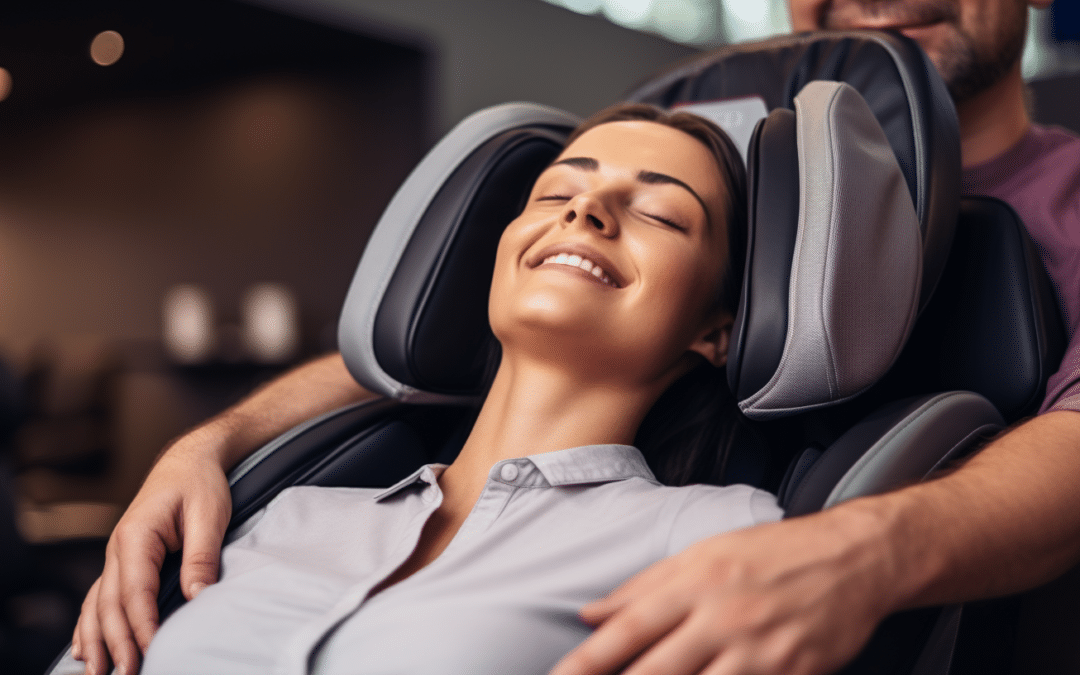Massage has long been known to reduce stress and promote relaxation, but neuromuscular massage is a powerful technique with many potential benefits. This specialized massage modality works on the deeper layers of muscle and fascia to target areas of tightness and pain. By using precise pressure and stretching, neuromuscular massage can restore balance to the body and mind. In this article, we’ll explore the science, techniques, and advantages of this form of massage therapy.
Key Takeaways
- Neuromuscular massage therapy focuses on specific body areas to relieve pain and tension.
- Techniques used in neuromuscular therapy include trigger point therapy, deep tissue massage, and myofascial release.
- Neuromuscular massage therapy treats chronic pain, muscle tightness, headaches, and sports-related injuries.
- The frequency of neuromuscular massage therapy should be tailored to individual needs and goals.
Understanding Neuromuscular Massage Therapy

Neuromuscular massage therapy is a type of massage that focuses on specific areas of the body to relieve pain and tension. It is designed to manipulate the body’s soft tissue, nerves, and muscles to help reduce the symptoms of various conditions, such as chronic pain, headaches, and muscle spasms. Neuromuscular massage therapy can also improve range of motion, reduce stress, and increase flexibility.
Neuromuscular massage therapy uses techniques such as trigger point therapy, deep tissue massage, and myofascial release. Trigger point therapy targets and releases trigger points, which are tender areas in the muscle that can cause referred pain in other body areas. Deep tissue massage breaks up adhesions and scar tissue deep in the power, while myofascial release uses sustained pressure to stretch the fascia. This connective tissue surrounds the muscles.
The benefits of neuromuscular massage therapy are numerous. It can help reduce inflammation and improve range of motion, pain, and circulation. It can also help to reduce stress and anxiety, improve posture, and reduce muscle spasms. Neuromuscular massage therapy is also beneficial in treating repetitive stress injuries, such as carpal tunnel syndrome, tendonitis, and bursitis.
Neuromuscular massage therapy effectively reduces pain, improves range of motion, and reduces stress. It is a holistic approach to treatment that can provide lasting relief for various conditions. By utilizing different techniques, such as trigger point therapy, deep tissue massage, and myofascial release, a neuromuscular massage therapist can provide a comprehensive treatment that will address the root cause of the issue.
Techniques Used in Neuromuscular Therapy

Trigger point therapy, stretching, and myofascial release are standard techniques used in neuromuscular therapy. This therapeutic massage is a form of bodywork designed to reduce muscle tension and restore balance to the musculoskeletal system. Trigger point therapy involves applying pressure to areas of muscle tightness known as knots or trigger points. This helps to reduce pain and improve range of motion. Stretching increases flexibility, reduces muscle tension, and improves circulation. Myofascial release is a massage that helps release muscle adhesions, reducing pain and restoring joint mobility.
Neuromuscular massage therapy treats various issues, including chronic pain, muscle tightness, headaches, and sports-related injuries. It can also increase athletic performance and reduce the risk of injury. This massage can help athletes improve their range of motion, reduce muscle tension, and increase endurance. For those dealing with chronic pain, neuromuscular massage can help to decrease pain levels and improve quality of life.
Neuromuscular massage differs from Swedish massage in focusing more on specific body areas. Swedish massage is a full-body massage that uses long, gliding strokes to relax the body. Neuromuscular massage targets specific areas of muscle tension and uses more sustained pressure to release muscle knots. It is important to note that a qualified massage therapist should only do neuromuscular massage.
Neuromuscular massage can benefit athletes, those with chronic pain, and those looking to relax. It helps to reduce muscle tension and increase flexibility, which can help to improve overall performance and reduce the risk of injury. It can also help reduce pain and improve the quality of life for chronic pain patients. If you are looking for a form of massage to help reduce muscle tension and restore balance to your body, consider neuromuscular massage therapy.
Comparing Deep Tissue Massage and Neuromuscular Massage
Comparing deep tissue massage and neuromuscular massage can help you determine which form of bodywork is best for you. Neuromuscular massage is a type of bodywork focused on the muscles to address muscular tension and pain. It utilizes various techniques to reduce stress, including trigger-point therapy, movement, and stretching. A deep tissue massage is a form of bodywork focusing on deeper muscle and connective tissue layers. It is often used to treat chronic pain and tension and is considered a more intense form of massage.
When it comes to relaxation, neuromuscular massage can be a good choice. It can help reduce muscle tension, relieve pain, and support the muscles to recover from strenuous activities. It is also beneficial for those with chronic muscle pain, such as back pain, neck pain, and shoulder pain.
Deep tissue massage is often used to treat chronic pain and tension and can effectively release deep-seated muscle tension and adhesions. It is also beneficial in aiding the body in recovering from injuries and can help to improve range of motion and flexibility.
The choice of which form of bodywork to use depends on the individual and their needs. Neuromuscular massage can benefit relaxation, muscle pain, and muscle recovery, while deep tissue massage can effectively treat chronic pain and tension. Ultimately, deciding which form of massage to use should be left up to the individual and their healthcare provider.
Determining the Frequency of Neuromuscular Massage Therapy
Determining how often to receive neuromuscular massage therapy can be critical to the treatment process. Frequency is determined based on the condition being treated, the severity of the disease, and the patient’s goals for their treatment. Generally, neuromuscular massage is done in a series of treatments, each lasting 45 minutes to an hour. Depending on the condition, the therapist may recommend weekly sessions for a certain period.
Neuromuscular massage addresses various conditions, such as muscle pain reduction, muscle relaxation, muscle flexibility improvement, muscle strength enhancement, muscle endurance improvement, muscle coordination, and muscle proprioception. The frequency of treatments should be tailored to each individual’s specific needs. For example, someone with a severe muscle injury may need more frequent treatment sessions, while someone with mild muscle soreness may not need as many sessions.
The frequency of neuromuscular massage can also depend on the patient’s lifestyle. For example, if the patient has an active lifestyle that includes regular exercise, they may need more frequent treatment sessions to keep their muscles in optimal condition. On the other hand, if the patient does not exercise, they may only need occasional treatments to maintain their muscle health.
In addition, the frequency of neuromuscular massage can vary depending on the patient’s goals. Those looking for short-term relief may require fewer treatments, while those looking for long-term maintenance may require more frequent treatments.
The frequency of neuromuscular massage should be determined by the patient’s condition, goals, and lifestyle. Discussing concerns or questions with the massage therapist to ensure the best possible outcome is essential. With the right frequency of treatments, neuromuscular massage can effectively reduce muscle pain, improve flexibility, enhance strength, and improve coordination and proprioception.
Science Behind Neuromuscular Massage Therapy
The science behind neuromuscular massage therapy is complex, but its effects on the body are well documented. It utilizes pressure, massage strokes, and techniques to stimulate and invigorate the muscles, allowing them to function at their fullest potential.
Neuromuscular massage for muscle health: * It helps to increase blood flow and oxygenation levels throughout the body, providing the muscles with the nutrients they need to function optimally. * It helps to reduce inflammation and muscle tension, allowing the muscles to relax and move freely. * It helps to reduce pain and soreness, allowing the body to heal and recover faster.
- Neuromuscular massage for muscle energy:
- It helps to stimulate the nervous system, increasing energy levels and alertness.
- It helps to improve muscle coordination and reaction time, allowing the body to respond quicker to outside stimuli.
- It helps to reduce fatigue and exhaustion, allowing the body to perform at its peak for longer.
- Neuromuscular massage for muscle rejuvenation:
- It helps to improve posture and balance, allowing the body to move more efficiently.
- It helps to improve flexibility and range of motion, allowing the body to move more freely and with greater ease.
- It helps to break up adhesions and scar tissue, allowing the muscles to move more smoothly and freely.
Overall, neuromuscular massage effectively treats muscle health, energy, rejuvenation, revitalization, invigoration, renewal, and refreshment. It can help improve the body’s overall function, allowing it to perform at its peak.
Advantages of Neuromuscular Massage Therapy
Reap the advantages of neuromuscular massage therapy to feel revitalized and energized. Neuromuscular massage therapy is a form of soft tissue mobilization that works to restore balance to the body. It can be used to treat a variety of conditions, including hip pain, migraines, fibromyalgia, and muscle flexibility. Using varied techniques, such as trigger point therapy and myofascial release, neuromuscular massage can help reduce pain, improve circulation, and restore range of motion.
Neuromuscular massage benefits include faster muscle recovery and improved flexibility. By applying pressure to the areas of the body that are sore or tight, neuromuscular massage can help to relax the muscles and relieve tightness. This can help improve circulation, reducing muscle soreness and stiffness. In addition, neuromuscular massage can help to reduce inflammation and promote the healing of muscle tissues.
Neuromuscular massage can also be beneficial for those suffering from chronic pain. The techniques used in neuromuscular massage can help reduce pain and restore range of motion in areas with discomfort. This can help to reduce the frequency and intensity of chronic pain, such as hip pain, migraines, and fibromyalgia.
Neuromuscular massage can also improve muscle flexibility and range of motion. By applying pressure to tight muscles, neuromuscular massage can help to loosen them and increase their range of motion. This can help to reduce the risk of injury and improve overall performance.
Finally, neuromuscular massage can help to improve circulation. The techniques used in this massage can help to increase blood flow to the affected areas, which can help to reduce inflammation and speed up the healing process. This can help to reduce pain, reduce swelling, and improve mobility.
Overall, neuromuscular massage is a safe and effective way to reduce pain, improve flexibility, and promote faster muscle recovery. You can reap its many benefits by incorporating this type of massage into your health and wellness routine.
A Typical Neuromuscular Massage Therapy Session
Neuromuscular massage therapy is a type of massage therapy that focuses on the muscles, tendons, and other soft tissues of the body to improve muscle balance, awareness, and function. A typical neuromuscular massage therapy session begins with assessing the client’s overall condition. During this assessment, the therapist will look at the movement of the client’s muscles and joints to find areas of tension and pain. The therapist will also use manual palpation to identify areas of tightness and trigger points.
Once the assessment is complete, the therapist will use neuromuscular massage techniques to address the areas of tension or pain. These techniques may include kneading, friction, stretching, or tapping. The therapist may also use trigger point therapy, which involves applying pressure to specific points in the muscle to help release tightness and relax the muscle. The therapist will monitor the client’s response to the techniques throughout the session and adjust them as needed.
Neuromuscular massage therapy can provide multiple benefits, including pain relief, improved muscle function, increased muscle awareness, reduced muscle tension, and stress reduction. In addition, it can help to restore balance to the body and improve overall wellness. Neuromuscular massage therapy can be used as a standalone treatment or in conjunction with other modalities such as chiropractic, physiotherapy, or acupuncture.
Evaluating the Safety and Efficacy of Neuromuscular Massage Therapy
Have you ever considered evaluating the safety and efficacy of neuromuscular massage therapy? With the rise in popularity of massage therapy as an alternative health practice, there is an increasing need for evidence-based research to evaluate the safety and efficacy of neuromuscular massage therapy. Here are some key points to consider when evaluating neuromuscular massage therapy:
- Neuromuscular massage for muscle strain prevention: It is essential to consider how neuromuscular massage therapy can help prevent muscle strain by improving neuromuscular balance and flexibility.
- Neuromuscular massage for muscle tension relief: Neuromuscular massage therapy can also help to reduce muscle tension by increasing circulation and releasing stored toxins in the muscles.
- Neuromuscular massage for muscle balance restoration: Neuromuscular massage can potentially restore muscular balance and flexibility, which can help reduce the risk of injury and improve overall physical performance.
The Evidence-based research on neuromuscular massage therapy is still in its early stages. Still, many studies have shown that it can provide many benefits, including improved muscle longevity, vitality, revival, and restoration. In addition, neuromuscular massage can effectively prevent and relieve muscle tension and restore muscular balance and flexibility. With continued research and development, neuromuscular massage therapy may become an accepted form of alternative health care.
Further Resources on Neuromuscular Massage Therapy
Now that we have evaluated the safety and efficacy of neuromuscular massage therapy, it is essential to look into further resources that can help you learn more about this type of massage. Neuromuscular massage is increasingly becoming famous for its many benefits, including relief of muscle spasms, stress relief, improved posture, muscle rehabilitation, retraining, reenergizing, and recovery benefits.
There are several resources available to help you better understand neuromuscular massage therapy. Many massage therapists offer neuromuscular massage therapy as one of their services and can provide more information. Alternatively, you can search the internet for websites and articles that discuss the benefits and techniques of this type of massage.
Another great resource is books and scientific journals that discuss neuromuscular massage. These books and periodicals provide more detailed information about this type of massage and can help you better understand its benefits and techniques.
Finally, consult your doctor or physiotherapist for more information about neuromuscular massage. They can provide valuable insight into the potential benefits of neuromuscular massage and how it can help you achieve your goals.
Frequently Asked Questions
What Qualifications Does a Neuromuscular Massage Therapist Need to Have?
A neuromuscular massage therapist must be certified and licensed to understand anatomy and physiology deeply. They must possess strong communication and interpersonal skills and a passion for helping clients improve their well-being.
Does Health Insurance cover Neuromuscular Massage Therapy?
Neuromuscular massage therapy is a powerful tool, but it can be costly, like a finely crafted sword. Unfortunately, it’s not typically covered by health insurance. However, it can be worth the investment for those who seek its many benefits.
What Should I Expect During a Neuromuscular Massage Therapy Session?
During a neuromuscular massage session, expect manipulation of muscle tissue to aid in relaxation and reduce tension. Your therapist may use kneading, compression, and friction techniques to target specific areas. Expect a deep massage that is tailored to your individual needs.
Are There Any Contraindications to Neuromuscular Massage Therapy?
Yes, neuromuscular massage therapy is contraindicated in some cases, such as during pregnancy or when a person has a fever. Additionally, those with certain skin conditions, such as eczema, may not be able to receive massage. It’s important to always consult a doctor before beginning any massage therapy program.
What Is the Difference Between Neuromuscular Massage Therapy and Other Types of Massage?
Neuromuscular massage therapy is a type of massage that focuses on specific muscles and their attachments, while other massage therapies tend to be more general. It uses targeted pressure to release tension and restore balance to the body.
Conclusion
Neuromuscular massage therapy treats nerve compression, joint pain, and referral pain caused by poor posture, bad posture, and plantar fasciitis. It uses deep pressure to manipulate the muscles and soft tissues around joints. The practitioner works to restore balance to the neuromuscular system, which can help to reduce stiffness, improve range of motion, and alleviate pain. Manual therapy techniques release tight muscles and trigger points, enhancing circulation and improving overall body function.
Neuromuscular massage therapy can treat various medical conditions, from acute injuries to chronic pain. It is a non-invasive and drug-free healing approach that can relieve multiple issues, including neck pain, muscle tension, and sciatica. It can effectively break down scar tissue and reduce inflammation, allowing the body to heal more effectively.
Neuromuscular massage therapy offers a comprehensive approach to physical wellness, addressing the underlying causes of pain and dysfunction. By addressing nerve compression, manual therapy, and neuromuscular imbalances, it can effectively treat joint pain, plantar fasciitis, and a range of other musculoskeletal issues. If you want a safe and natural way to reduce pain and improve mobility, neuromuscular massage therapy may be the answer.

